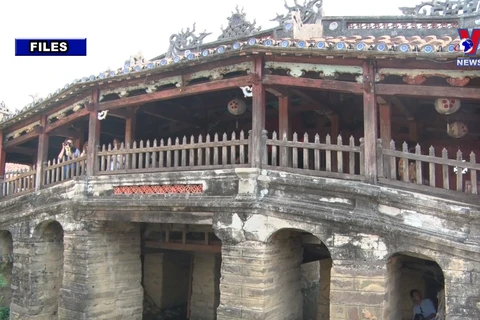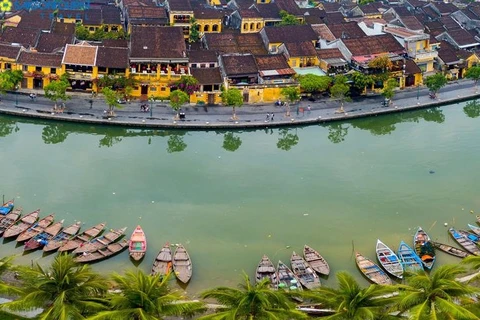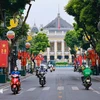Hanoi (VNA) - After two quiet years due to the COVID-19 pandemic, Hoi An is now bustling again as it is among the two destinations selected by provincial authorities to reopen its door to international tourists.
Located in the lower reach of Thu Bon River in the coastal plain in Quang Nam province, about 30 km south of Da Nang city, Hoi An has been known in the international market by various names such as Lam Ap, Faifo, Hoai Pho and Hoi An. The only Southeast Asian port-market in Vietnam and very rare in the world, Hoi An keeps almost 1,360 architectural relics intact. These include streets, houses, assembly halls, communal houses, pagodas, shrines, clan houses, ancient wells and tombs. They exhibit both Vietnamese traditional art characteristics and the convergence of eastern and western cultures.
The cultural and economic exchanges that occurred from the 16th to 19th centuries have left in ancient Hoi An most of the forms of Vietnam’s ancient architecture, grouping traditional national arts enriched with sketches of foreign arts.
Researchers hold that the ancient architecture in Hoi An was renewed in the early part of the 19th century, but the real starting point could be much earlier. The ancient architecture is clearest seen in the ancient quarter located inside Minh An ward, covering about 2 square km and housing most of the famous relics in Hoi An.
The streets in the ancient quarter are short, narrow and crisscrossing.
Architectural works there were mostly built from traditional materials, including brick and wood, and they are not higher than two storeys.
It is easy for tourists to recognise traces of the time not only in the architectural design of each construction but also everywhere else, from moss-covered tile roofs, walls, sculptures depicting a strange creature or an ancient story. It is a convergence of Chinese, Japanese, Vietnamese and Cham artisans. Each construction still bears the cultural hallmarks of many nations. At present, Hoi An is still the dwelling place of thousands of residents, serving as a living museum in terms of architecture and urban lifestyle.
Through centuries, customs and practices, rites, cultural and belief activities as well as traditional foods of Hoi An are still kept and preserved along with generations of ancient street dwellers. The town also boasts a natural environment which is healthy and peaceful with small suburban villages engaged in crafts like carpentry and pottery.
After testing negative for COVID-19, the first foreign visitors under the pilot “vaccine passport” programme took a tour around the ancient town on November 11.
Vice Chairman of the Hoi An People’s Committee Nguyen Van Lanh expressed his gratitude towards the visitors for choosing Hoi An as the first destination in their trip to Vietnam.
It has taken great efforts from the local authority and people over the last two years to be able to welcome back foreign tourists and to make Hoi An a safe and friendly destination, he said, adding that he expects to see Hoi An and Quang Nam at large regaining its reputation./.
| On December 4, 1999, in Marrakech city of Morocco, the 23rd session of the World Heritage Committee of the UNESCO officially included Hoi An ancient town into the list of world’s cultural relics. It is honoured by many famous travel magazines. In July 2019, with 90.39 points, Hoi An was elected by the Travel and Leisure travel magazine as the most attractive city in the world that year. It is also the first tourist site in Vietnam honoured by the Google Doodle. |
























